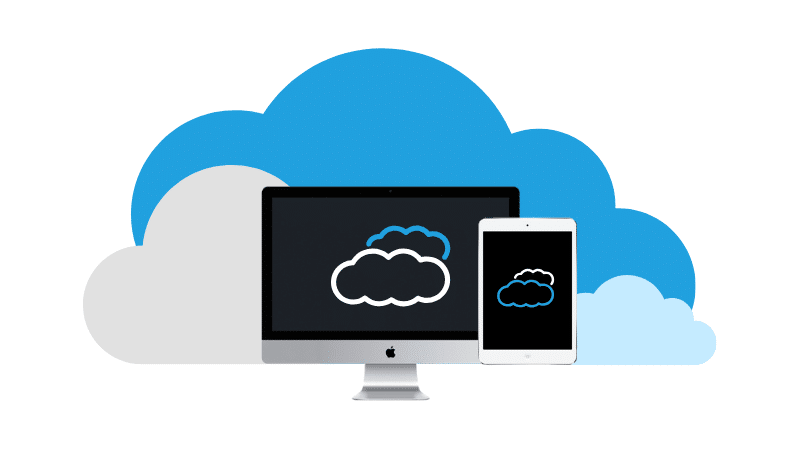Safeguarding Your Cloud: Data Security and Loss Prevention
Cloud computing is becoming increasingly popular, underlining a major shift in the digital age. With its scalability, flexibility, and cost-effectiveness, the cloud has become an increasingly popular choice for businesses of all sizes. However, this shift is not without its challenges, particularly in data security.
The transition from traditional, on-premises data management to cloud-based solutions has raised significant concerns, especially around the risks of data loss. As we explored in our previous blog, ‘What are the Cloud Migration Challenges and Benefits?‘ Cloud computing offers scalability and cost savings, but also presents new challenges to data security and loss prevention.
Keeping cloud data secure is not a one-size-fits-all task due to the complexity of cloud environments. It requires an in-depth understanding of various security requirements – data in transit and data at rest each demand different security protocols. Moreover, cloud service providers present unique shared responsibility models. Added to this complexity is the necessity to back up data securely in a separate location. As a result of these multifaceted challenges, organizations are seeking reassurance. They want to know where their data is, who can access it, and how it is being used. The key to providing this peace of mind and mitigating the risk of data loss in the cloud lies in addressing these issues proactively, starting at the very beginning of the cloud migration process.
Understanding the risks
Taking the right steps to protect data in the cloud begins with a proper migration process. It is vital to understand that while cloud security measures can be implemented post-migration, it is much more effective to secure, protect, and back up data during the migration itself. This proactive approach is important given the common causes of data loss in the cloud such as human error, cyberattacks, and technical failures. A carefully planned migration strategy can significantly mitigate these risks.
Once organizations start migrating and protecting certain data sets, they often realize the benefits of fully modernizing their IT (Information Technology) environment. This modernization, encompassing increased computing power, bandwidth, advanced virtualization, and better data storage choices, not only boosts productivity and collaboration but also strengthens the overall security of the IT environment. In fact, half of all companies report improved data security after moving to public cloud solutions. However, the other half did not experience such clear benefits, highlighting the importance of an informed and measured cloud transition.
Real-world examples further emphasize the need for a strategic approach. For instance, a study showed that human error in cloud settings led to significant data breaches in several organizations. This underlines the importance of robust training and protocols during migration. Similarly, reports of increased cyberattacks on cloud services underscore the necessity of incorporating advanced security measures. By regularly backing up cloud data and staying vigilant about potential technical failures, organizations can effectively navigate the challenges of cloud data protection. This combination of strategic migration and ongoing vigilance forms a solid defense against cloud computing’s potential risks.
Migrating data to the cloud
When migrating data to the cloud, a comprehensive transition plan is essential. Every step is critical to establishing the most secure environment, as your system’s strength depends on its weakest link. For optimal cloud data protection, consider these steps, and remember the importance of data backups.
Establish Cloud Objectives: Clearly define your current and upcoming cloud business objectives, ensuring collaboration between IT and C-Level management for a clear understanding of both business and technical needs.
Budget Planning: Carefully manage your cloud expenditures by setting a short-term budget and adjusting it as your deployments grow. Regularly monitor your budget, factoring in the costs of data backups.
IT Infrastructure Review: Assess your existing IT setup in the context of your future goals. This includes evaluating the migration feasibility of various data types, especially those based on proprietary software or legacy systems.
Workload Analysis: Determine which applications are ready for cloud migration and backup, and which ones should be delayed. Develop a plan to prepare delayed applications for future migrations.
Cloud Provider Evaluation: Choose a cloud provider that aligns with your security and compliance needs and offers competitive services. Consider multiple cloud solutions if no single provider covers all bases.
Understanding Shared Responsibility: Understand the shared responsibility model of your chosen cloud provider, identifying what your organization needs to secure versus what the provider secures.
Developing a Pilot Project: Start with a small-scale migration to test your cloud strategy and security measures, using initial successes to inform wider data migrations.
Governance Policy Formulation: Develop a legal and organizational framework that prioritizes security in cloud data management. Involve key stakeholders in creating these policies.
Comprehensive Cloud Strategy Development: Merge all these practices into a unified strategy, ensuring thorough implementation during your cloud migration journey.
Key takeaways
For effective and secure cloud data migration, it is essential to focus on key areas: ensure regular, automated data backups; implement stringent security measures like encryption and multi-factor authentication; educate your team on cloud safety practices; and develop a comprehensive disaster recovery plan that is regularly reviewed and updated. These steps collectively form a resilient approach to protecting and managing cloud data efficiently.
It is important to know that the entire cloud migration does not have to be handled by your IT team. Commencis is an AWS Advanced Consulting Partner that helps organizations develop Cloud Native Applications. Commencis has a deep understanding of the approach and can help organizations apply it in a way that meets their specific needs. Contact our cloud experts to enable cloud workload efficiency in your business.
FAQ
Cloud data security is critical to protect sensitive business information from threats like data breaches, cyberattacks, and accidental loss. A secure cloud environment ensures business continuity, compliance, and customer trust.
The most common causes of cloud data loss include human error, cyberattacks, technical malfunctions, and misconfigured security settings. Preventing these risks requires a proactive approach during and after cloud migration.
Effective cloud data loss prevention strategies include regular automated backups, strong encryption, multi-factor authentication, employee training, and implementing a robust disaster recovery plan.
In the shared responsibility model, cloud providers manage the security of the cloud (infrastructure), while customers are responsible for securing their data and applications in the cloud. Understanding this division is crucial to maintaining compliance and security.
Security measures should be integrated during the migration process, not after. Early implementation reduces vulnerabilities and improves overall cloud resilience from the outset.
As an AWS Advanced Consulting Partner, Commencis offers tailored cloud migration and data protection solutions. Their cloud experts guide organizations through secure transitions using best practices in backup, encryption, compliance, and cost optimization.
Essential steps include defining business objectives, analyzing workloads, reviewing IT infrastructure, selecting the right cloud provider, conducting pilot projects, and developing strong governance and backup policies.
Reading Time: 5 minutes
Don’t miss out the latestCommencis Thoughts and News.





